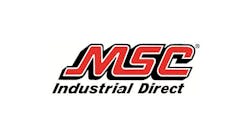Latest from Technology
Schneider Electric Using HQ Microgrid to Prove Technologies and Business Model
When Schneider Electric set out to design a microgrid to provide power to its new North American headquarters in Andover, Mass., dubbed Boston One, it easily could have made it a soup-to-nuts showcase of how its systems and products can integrate and manage every kind of power source available. Instead, the company’s power segment engineers approached the project as a demonstration of its microgrid business model, not just its technological prowess.
“What we did was solve for this particular building,” Mark Feasel, vice president of Schneider’s Electric Utility Segment & Smart Grid, said in an interview with Electrical Marketing. “We treated this facility site like a customer and only did what would pencil, commensurate with our goals of sustainability, viability and cost.”
The resulting system incorporates 400 kW of solar photovoltaic panels — 209 modules on the roof of the site’s main building followed by 1,404 modules on carports in a later phase — with the company’s solar inverters and EcoBlade lithium-ion energy storage system, all managed by its StruxureWare energy management software platform. The first phase is expected to come online in fall of 2016.
The choice of solar power was in line with the company’s overall thrust to help customers make more intelligent use of energy. “Investing in renewable, sustainable energy is at the core of who we are,” Feasel said. “As a company we believe two things: that there are billions of people without access to reliable energy, and that the ways people use energy today aren’t sustainable — that if we continue the way we’re going we’ll create permanent damage to our planet.”
But the type of sustainable or renewable energy used in a given building depends on the location and the economic viability of the various energy options. In the case of Boston One, incentives from the State of Massachusetts, along with the extension of the investment tax credits at the federal level, plus climatic considerations regarding solar irradiance, weather, wind and so forth, made it a good situation to use PV as the anchor resource, Feasel said.
The microgrid at Boston One will provide 20% to 30% of the facility’s power needs. Again, Schneider easily could have built a system the provide all the power the campus needs, but the commitment to making it a sound financial investment led to a smaller system. “When you’re looking at the business case, sizing does matter,” he said, noting that many local and state incentive programs have program caps and other restrictions. “You have to look at how the financial case stacks up. We modeled different things — from powering the complete site to a very small demonstration microgrid, and settled on that 20%-30% range where we have all the critical circuits covered.”
The company’s StruxureWare DSO (demand-side operations) software serves as the microgrid’s central controller. Among its advantages, especially for a photovoltaic installation, Schneider happened to acquire the weather forecasting service DTN as part of its purchase of Telvent in 2011. DTN has been recognized as the most accurate provider of precipitation and short-term temperature forecasts for many years. Having that service integrated with the StruxtureWare controller allows it to adjust energy use and storage with the weather in mind.
“The weather service is very differentiating service. It can forecast irradiance on the solar panels and it can also forecast changes in load, because in an office building, one of the primary variables is the temperature,” he said.
With that information the system can forecast how much energy the microgrid will be generating and how much it will be importing from the grid throughout the day, use the battery to offset peak-time pricing, and integrate with the building management system to preheat or precool the building. “It solves for, economically or reliability-wise, what’s the best situation to be in? If there’s a storm coming in afternoon, you may not want to deplete the battery. It constantly seeks to balance those variables.”
The power produced by the solar panels is stored using Schneider’s EcoBlade energy storage system, a rack-mountable lithium-ion battery storage solution developed for the data center market, with solar power inverters onboard in the racks.
Over time, the microgrid will serve as a “living laboratory” for developing new technologies, where researchers can investigate how new equipment technologies operate in microgrid mode and how the microgrid responds.












